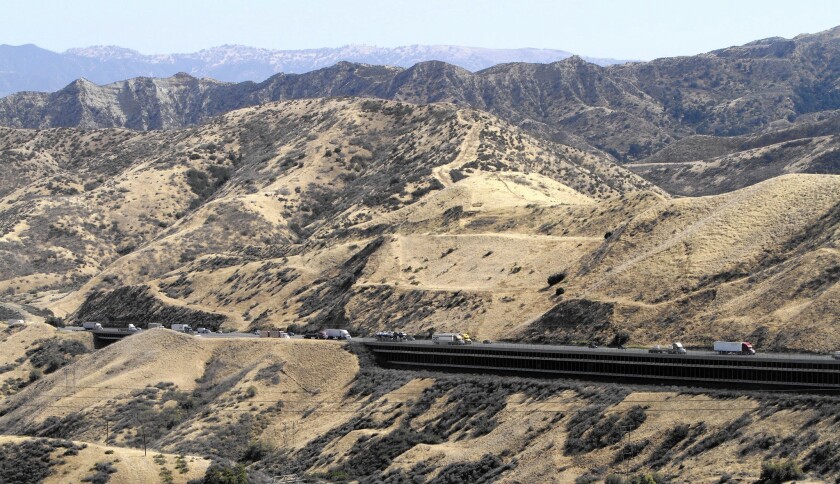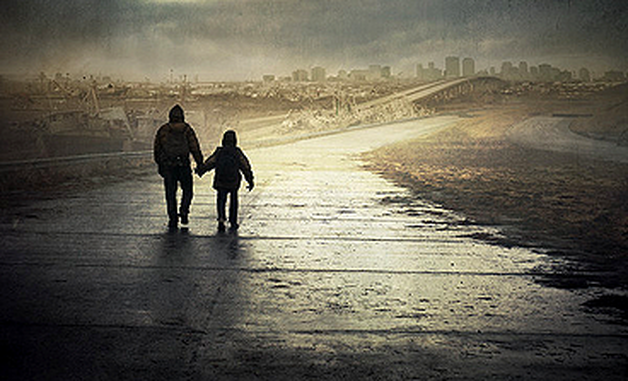*Author's Note: I talk about three novels very generally without giving summaries because that would take up too much time. If you would like summaries of each novel before you read this blog post, click these links for each - The Hunger Games by Suzanne Collins - Parable of the Sower by Octavia Butler - The Road by Cormac McCarthy.
When you think about how people interact and how the environment helps them in dystopias, you think about whether someone survives or dies. Jane Bennett (2010) talks about how we, as humans, need to stop making binaries because there is not always a black and white, whether it be male/female. mind/body, human/animal, reason/emotion, or so on. Each book we've read has shown this. In The Hunger Games, The Parable of the Sower, and The Road, you can see where these breakdown. In each novel, you can see where humans are animalistic. You have children killing each other in barbaric ways in The Hunger Games (Collins 2009). Then you have people eating others just to survive, whether it be killing someone or eating the bodies of the dead in both Parable of the Sower (Butler 1993) and The Road (McCarthy 2006). In normal human society, that is not how people are supposed to act.
 |
| What's Considered Animal Behavior When It Comes To Humans? animal-size-comparison-4.jpg |
It's the same with the male/female binaries in Parable of the Sower. Men and women contributed equally to the neighborhood. They all were on watch, many families had both parents working in some capacity. Then, when Lauren traveled, she went as a man. Yes, people were surprised when they found out that Lauren was actually a girl, but they didn't really question it. More often then not, they were surprised by how young she was (Butler 1993).
While all of these examples show how binaries can be incorrect, especially when environment is taken into consideration, I think there is something larger in the connections between the people an nature. Personally, I think that people living in dystopias tend to have more hope when there is still flourishing nature around and a place that can become a refuge. In these environments, both the people and nature gain more agency. Agency is the ability of something or someone to have an effect while an agent would be someone who acts (Bennett 2010). Both nature and people gain agency because people use nature and their environment to make stuff happen, which allows them to have an effect, and nature provides what is needed in order to give the people a positive edge most of the time. Now, this is not always the case. In all three novels, fire is considered nature and can be more destructive than helpful, but I am focusing on other elements, the more positive ones. Overall, the more nature there is, the more agency grows for nature and the characters.
In The Hunger Games, Katniss is surrounded by nature and it is by all means bountiful. Unlike the other novels, everything is still lush and growing. Katniss knows how to use this to her advantage in order to keep her safe and alive as well as acting like a refuge. Before Katniss even enters the games, she uses the woods to keep her family alive after her dad dies. She learns to hunt, harvest edible food, and even finds the plants that her mom can use in medicines and remedies so that the family can make some money beyond what Katniss makes by selling her catches of the day. The forest is the only thing that provides her family with the hope to survive. Then, when Katniss gets into the games, she feels relief and hope wash over her when she sees that there is a vast forest in the arena. Katniss knows that she will be able to use this survive and for the first time feels and hopes that she has a real chance of winning the games and returning to her family. Even with comfort and familiarity, the capital still tries to use nature in a negative way that would hurt or even kill Katniss and the other tributes. In the arena, they have the tracker jackers, the mockingjays, and nightlock berries. While others meet their ends as a result of these things, Katniss uses them to her advantage. She saves herself from the Career Pack by cutting down the Tracker Jacker nest. She uses the mockingjays to stay in contact with Rue while they're apart. And she keeps the nightlock berries in order to either end her and Peeta's misery/suffering or to get them out of a hard spot and make the capital look foolish. She really would have been okay with either outcome in my opinion. With all of these examples, Katniss thrived because of nature. This gave herself more agency as an agent and gave the stuff that seemed either harmless or unimportant agency as well (Collins 2009). Who knew that berries could have that large of an impact on a country?!
From what I've seen in the book, with so much nature and wildlife around her, Katniss has a hope that other people do not and this hope is what drives her forward to get to the end of the games and back to her family.
In Parable of the Sower, Lauren's first environment gives her and her town safety for some time. They have a wall and things still grow in the soil, so they have food and don't have to worry about going outside of the walls too much. However, when this is all taken away from them, Lauren is left aline and she is left with only the knowledge about nature and the outside world that she has read in books and heard about from her father. She uses this information to keep herself alive in a sense that she knows different things that she and her companions can eat on the roads as well as finds seeds that she can hopefully plant when they find a place to settle. The trees and nature that surrounds the road also acts as an oasis and place of safety while they travel. When they find the state parks or rest stops with secluded areas, they feel extra safe and all allow themselves to feel hopeful that they will find somewhere like that forever. Later, as their group grows, they begin to hunt and fish, which is nature providing for them to keep going. Lauren also sets off with the idea that things are much better in the north where there are fewer people, more jobs, and private places. All these prospects bring hope to Lauren and her group (Butler 1993).
 |
| How I Imagine the Highway in the Parable of the Sower - Without the Cars of Course https://ca-times.brightspotcdn.com/dims4/default/a1ed9e3/2147483647/strip/true/crop/2048x1179+0+0/resize/840x484!/quality/90/?url=https%3A%2F%2Fcalifornia-times-brightspot.s3.amazonaws.com%2F87%2F7b%2F6fa8e9d2af97a9335b734229311b%2Fla-2429384-fi-hy-old-ridge-route-mjc-02-jpg-20160501 |
Additionally, Lauren brings together the ideas of EarthSeed. The entire philosophy is nature based and it shows how growth and change can be positive things. The philosophy is also one of the reasons that Lauren allows for the group she is traveling with to grow. While like a little cult, they become a confederate of bodies, which is complex bodies (humans would fall into this) that congregate with each other in the pursuit of enhancement of their body (Bennett 2010). As the group grows, they become stronger and more fortified. They have a sense of security and a sense of hope by being all together. Once they reach Bankole's land, they realize that it can become a safe place with all of them there. It is still prosperous, so they can grow crops and they can all take turns protecting by keeping watch. When they find this place and decide to stay, they have hope for a future where they can thrive here (Butler 1993). While nature itself does not seem as prosperous in this novel as in The Hunger Games, the ability for things to still grow goes hand in hand with the idea the people's hope grows when they have it around them.
 |
| Images of Life in The Road for the Man and Boy https://www.thatenglishteacher.com/uploads/6/6/8/5/6685188/4285247.png?629 |
While all three of these stories definitely have a theme of survival, the environment helps the characters either gain or lose confidence and hope in their abilities to survive. Where there is more nature, hope tends to sit at a higher level and that can be seen as you go through each novel. While all of them have low points with little hope, some of the characters are able to pick themselves up and keep going. The increased levels of hope and nature create more agency throughout the stories and more of an effect can be made.
Work Cited
Bennett, Jane. 2010. Vibrant Matter: A Political Ecology of Things. Duke University Press.
Butler, Octavia. 1993. Parable of the Sower. Grand Central Publishing.
Collings, Suzanne. 2009. The Hunger Games. Scholastic.
McCarthy, Cormac. 2006. The Road. Vintage Books.

No comments:
Post a Comment